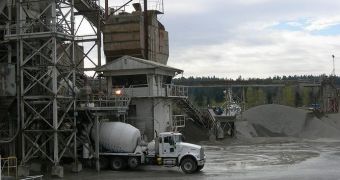More than 2,000 years ago, some bright scientists in the Roman Empire created a compound that has remained in use throughout history, up to this day. Cement is still one of the most widely used construction materials in the world, with most constructions employing it in one form or another. However, despite its wide-scale use, scientists still cannot fully explain today the interactions going on between atoms in the material. This is largely due to the immensely complex internal structure that the compound has. But now, a new research effort is aimed directly at this.
Understanding the properties and characteristics of the components inside cement was the main goal behind Mr. Hegoi Manzano Moro's PhD thesis. The work, entitled “Atomistic simulation studies of cement components,” was presented at the University of the Basque Country (UPV/EHU), where the expert followed his doctoral studies. The paper takes on the large number of chemical reactions that start occurring as soon as cement powder is mixed with water. In addition to the chemical changes, the physical properties of the material also shift, which is precisely why it is used.
Cement paste, the end-result of this mixture, features multiple components, and a variable composition and porosity. Many people who have had the chance to work with this material say that it is a “live” compound. This makes perfect sense when considering the fact that, even decades after the cement was poured into place, it continues to undergo chemical and physical transformations. This seems to indicate that the initial reactions are only the start of a more complex morphing process that takes many years to complete.
One of the things that give cement its cohesion and mechanical properties is a matrix made up of calcium silicate hydrate, or C-S-H. Though it makes up more than 70 percent of the paste, the stuff is still not properly understood, and still has many mysteries to reveal. Using atomistic simulations, Manzano was able to gain a deeper insight into how this structure functioned. One of the most important things that the expert found was that a clear relation existed between the mechanical properties of the C-S-H gel and the internal structure of the nanoparticles that made it up. The order of the nanoparticles is probably one of the most important factors determining the mechanical properties of the entire mixture.
Atomic-scale simulations such as this one will provide scientists and construction workers with the proper knowledge on how to improve the resistance and performances of cement, and could ultimately enable the construction of safer offices, homes, schools and bridges.

 14 DAY TRIAL //
14 DAY TRIAL //